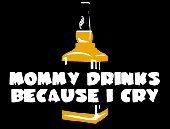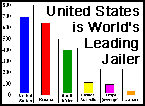|
|
 |
 |
 |
 |
register |
bbs |
search |
rss |
faq |
about
|
 |
 |
meet up |
add to del.icio.us |
digg it
|
 |

|
Temple of Set Reading List
"Temple of Set Reading List:
Category 18 - Life and Death" (3/1/86CE)
Reprinted from: _The Crystal Tablet of Set_
© Temple of Set 1989 CE
Weirdbase file version by TS permission
by Michael A. Aquino, Ipsissimus VI* Temple of Set
Electronic mail: MCI-Mail 278-4041
To the profane, life and death are automatic, inevitable, and unalterable.
Hence they take the influence of the life/death continuum on human affairs
for granted. To the magician, life and death can be influenced and
eventually controlled altogether. The Victor Frankenstein of yesterday
becomes the genetic engineer of tomorrow. New forms and mutations of life
will become possible, death may cease save through accident, and the Self
may evolve into a Self-contained state of existence unhampered by a physical
shell chained to the entropy of the objective universe. Xeper.
18A. _The Immortalist_ by Alan Harrington. NY: Avon Books #380-00201-125,
1969 [recently revised and updated]. (TS-3) MA: "In this brilliant book
Harrington argues that the presence and the fear of death are root causes
for much if not all of human behavioral characteristics. Non-human animals
cannot conceptualize and anticipate death, hence are not governed by it.
Harrington then catalogues the surprising number of ways in which death-
awareness grips human philosophy, presents data on efforts to arrest death,
and finally ventures hypotheses concerning a non-death-obsessed environment.
A scientific rejection of the Osirian ethic. I originally reviewed #18A in
the Church of Satan's newsletter _The Cloven Hoof_ #V-1: 'The Secrets of
Life and Death', reprinted as Appendix 71 in #6N."
18B. _The Immortality Factor_ by Osborn Segerberg, Jr. NY: Bantam Books
#553-08183-195, 1974. (TS-4) MA: "This is a somewhat more technical approach
to the questions addressed in #18A, with emphasis on the physiological aging
and regeneration processes [see also #17F's discussion of this], the
creation of life, and the ecological considerations of a controlled
life/death environment [shades of _Logan's Run_]. Well-researched and
carefully-argued."
18C. _The Book of Opening the Mouth_ by E.A. Wallis Budge (Trans.). NY:
Benjamin Blom, 1972. (TS-5) MA: "The Spell for Life Unbounded by Time,
caricatured as the 'Scroll of Thoth' in the classic Boris Karloff film _The
Mummy_ and also by Bram Stoker in _The Jewel of Seven Stars_ (basis of the
motion picture _The Awakening_). As with other TS-5 codes, this text is not
to be read or used casually or irresponsibly. The motion picture
_Deathdream_ (Quadrant/Impact Films, 1972) can give you a good idea of what
can happen when you tinker with necromancy without appreciating the
consequences of 'success'."
18D. _Our Eternity_ by Maurice Maeterlinck. NY: Dodd, Mead & Co., 1914. (TS-
4) MA: "A revision and expansion of Maeterlinck's 1911 essay 'Death'. The
highest form of inductive logic directed towards the major issues of
existence and survival of the egocentric consciousness after material death.
Key to the effectiveness of #18C. [Maeterlinck is also the author of #2I.]"
18E. _The Mysteries of Life and Death: An Illustrated Investigation into the
Incredible World of Death_ by Professor Keith Simpson, OBE, FRCP, FC Path,
et al. NY: Crown (Crescent Books, 1980). (TS-3) MA: "At first glance this
appears to be a rather morbid 'coffee-table' book, but it soon becomes
apparent that it is quite a bit more. For one thing, the contributing
authors are among the most respectable and distinguished in their fields,
which range from philosophy and criminal psychiatry to pathology and
forsenics. Here is the entire concept of death for you to examine:
mythology, physiological aspects, psychological considerations, and cultural
legacy. There are chapters on assassination, disease, the soul, strange &
bizarre funeral & entombment practices, suicide, artistic influences, war,
etc. After you get over feeling queasy [the photographs & illustrations pull
no punches], you will be fascinated to discover just how little you actually
knew about the phenomenon of death [hence life], and just what the limits of
human knowledge concerning it happen to be."
18F. _The Savage God: A Study of Suicide_ by A. Alvarez. NY: Random House,
1972. (TS-3) MA: "An incisive, objective, and empathetic investigation into
the psychology of suicide, accompanied by a survey of suicide themes in
historical literature. Said the _New York Times_ of this book: 'To write a
book about suicide - to transform the subject into something beautiful -
this is the forbidding task that Alvarez has set for himself; he has
succeeded!'"
|

|
 |
To the best of our knowledge, the text on this page may be freely reproduced and distributed.
If you have any questions about this, please check out our Copyright Policy.

totse.com certificate signatures
|
 |
 |
About | Advertise | Bad Ideas | Community | Contact Us | Copyright Policy | Drugs | Ego | Erotica
FAQ | Fringe | Link to totse.com | Search | Society | Submissions | Technology
|
 |
 |
 |
 |
|

